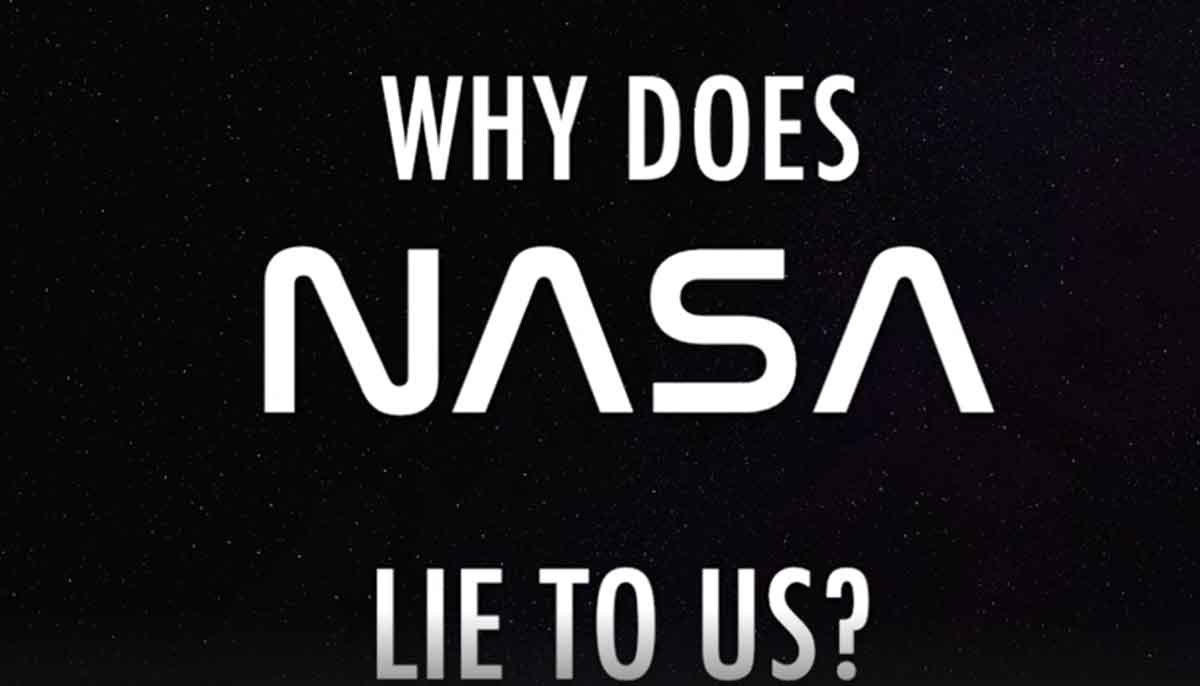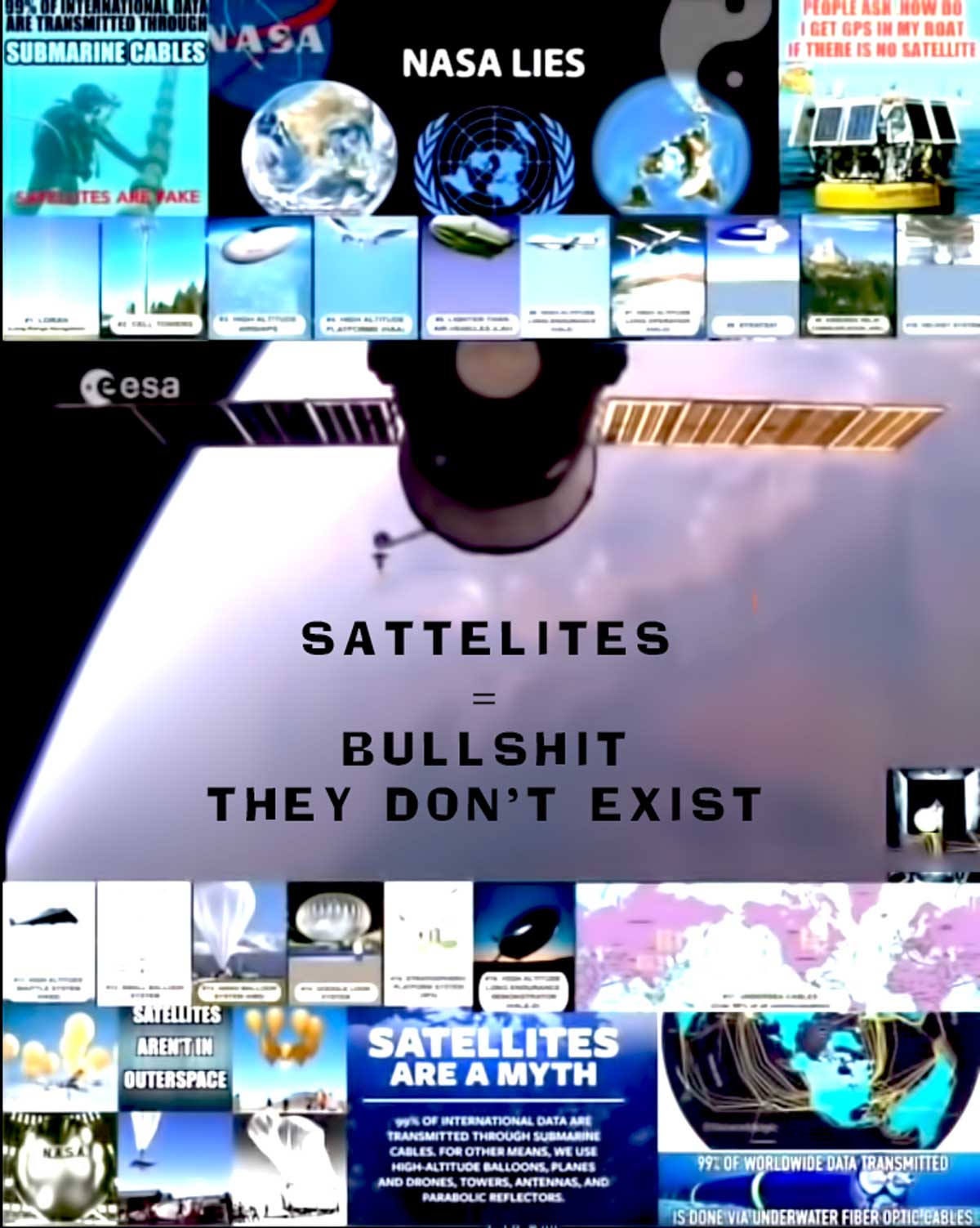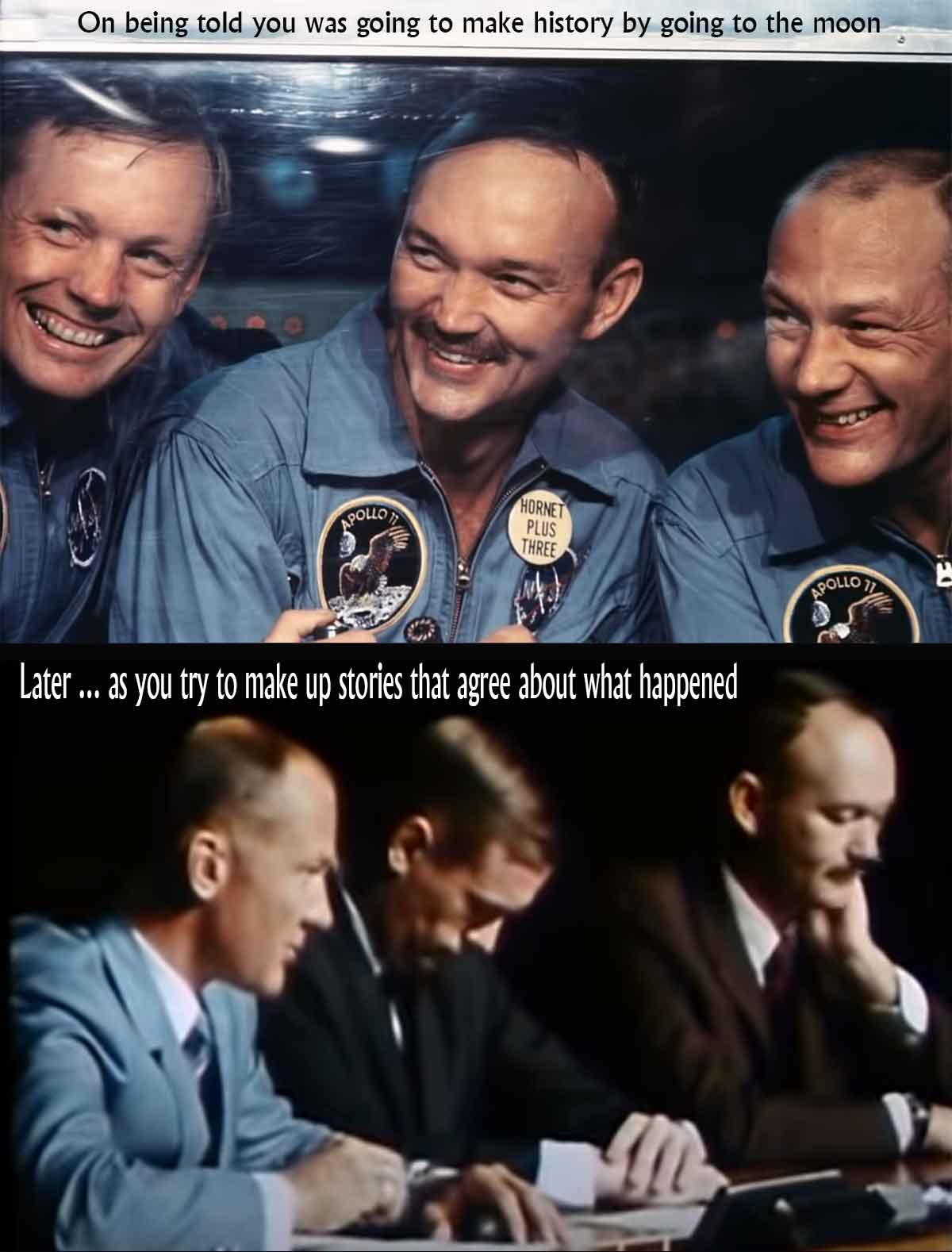








click this image for video


click the image below for ALL
website-page navigation buttons
or scroll down to
for page content



Go to Rabbit Hole Grand Central for links to all pages


Links to

additional pages

you might

have an

interest in


Some soothing music to start with
which pretty much sums things up
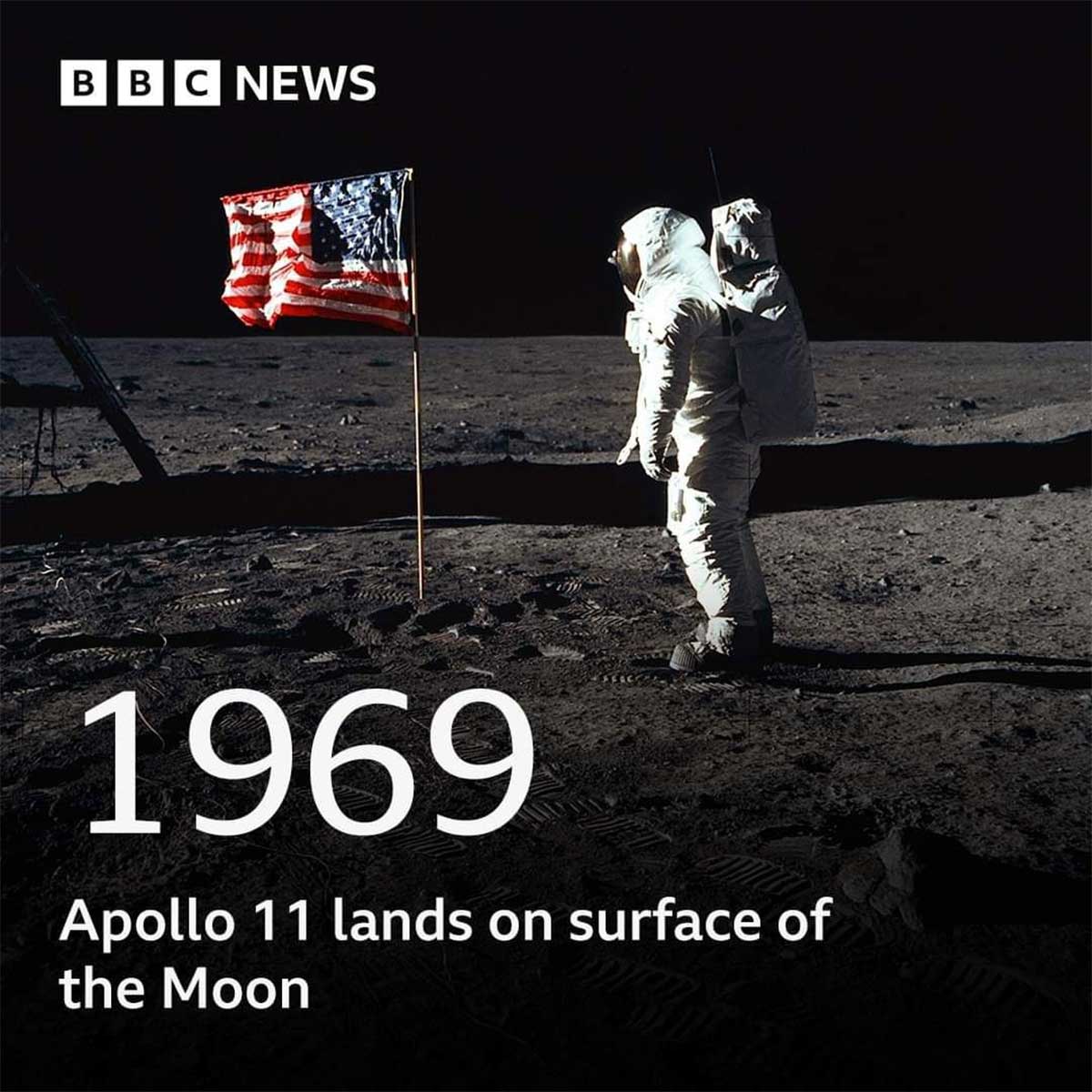
click image for video
Why does NASA
lie to us?

click image for video
HOW THE NAZIS BECAME ‘NASA’
“OPERATION PAPERCLIP”
BY ANNIE JACOBSEN
click image for video
Putin Told
NASA moon landing photos
are fake
Greg Reese
Dec 9, 2023
click button for video
The WHY files
over 2.5 MILLION
subscribers
The Moon Landing:
Stanley Kubrick’s Greatest Film
how NASA and Hollywood
fooled the world
>Stanley Kubrick is considered one of the greatest filmmakers of all time.
Of his 13 movies a few are considered classics in their respective genres. Including the black comedy Dr. Strangelove, the highly-quotable anti-war commentary of Full Metal Jacket, and one of the most disturbing and enduring horror films of all time, The Shining.
But in 1968, Kubrick released “2001 – A Space Odyssey”.
This is more than a classic. It’s a masterpiece.
And widely regarded as one of the best science-fiction films of all time, and probably the most influential.
This collaboration with science fiction author Arthur C. Clarke tells the story of an alien intelligence that visited Earth in the distant past, and left behind artifacts in the solar system.
The movie features groundbreaking special effects, which still hold up today.
In fact, the effects looked so good, that the movie gave the American government an idea.
Billions of tax dollars were invested in the space program but the Soviets were still years ahead of the United States.
NASA desperately needed to get to the moon before Russia, but they knew it was impossible.
So they turned to one of the world’s best filmmakers for help.
Because when it came to the moon: if they couldn’t make it, they’d fake it.
click button for video
NASA admits
space and planets are fake
click button for video
Wikileaks releases
moon landing scenes filmed
in Nevada desert
September 2023

click button for video
We have landed on the moon,
but not as you think!!
If you want thought provoking
– this is it!!
This is probably one of the most astonishing videos I’ve ever come across.
I thought I ‘had’ it with world events –
what’s seems to be going on and where we seem to be going.
Then I came across this –
and everything I thought I knew has just about gone out the window.
-0-0-0-0-
We have landed on the moon,
but not as you think !!
The entire space program seen on a larger Earth.

click button for video
NASA
saTan
minus the ‘T’

$6.5 million per day
to go nowhere
Thanks a lot NASA
-0-0-0-0-
Where do you draw the line on
the BS you’re prepared to accept?
That NASA is a CIA type mind control program, it’s entire mission is to seduce you into a false reality, all that it ever shows you is CGI/artists impressions, it is all fake.
Satellites hooked on to helium balloons…
Conspiracy theory is a term used to intimidate the sheep in to not seeking the truth…for they would never want to be a ‘crazy right wing conspiracy theorist’ right?
This shit is obvious to me, who gives a rats arse what the mind controlled are programmed to call you?
Seeking the truth sets you free of the mind control you cannot otherwise see…reality only exists within our minds, via the information we gather via our senses, some have learned to use this truth, feeding us false information in the process, against us.
Stop believing what ‘they’ tell you and actually look at the world around you.

How historians are reckoning with
the former Nazi who
launched America’s Space Program
BY ALEJANDRO DE LA GARZA
JULY 18, 2019 11:27 AM EDT
Sporting a grey double-breasted suit, slicked-back curls and a slide rule, rocket engineer Wernher von Braun cuts a suave, authoritative figure in Disney’s 1955 television special Man and the Moon. Speaking with a German accent, the then-director of development at the U.S. Army Ballistic Missile Agency in Huntsville, Ala., uses a series of models and illustrations to explain how America will reach the moon — with the aid of an enormous nuclear-powered space station, of course.
The United States eventually planted a flag on the lunar surface, though without the help of any orbital reactors. And all through the Space Race, von Braun, a German scientist scooped up by the U.S. in the waning days of World War II, was the public face of the American space program, as well as one of its chief architects. But much of the Cold War-era coverage of von Braun downplayed the darker details of his past: before he was building rockets for America, he was building them for Hitler. Germany launched more than 3,000 missiles of his design against Britain and other countries, indiscriminately killing approximately 5,000 people, while as many as 20,000 concentration camp prisoners died assembling the weapons.
In the years since the original Space Race has ended, historians have begun to reassess von Braun’s legacy. Some have portrayed his time working for the Nazis as a survival strategy, but others have gone so far as to frame him as a war criminal, or something close to it. Von Braun died in 1977, so there’s no possibility of hearing him out. But as the country and the world celebrates the 50th anniversary of the Apollo 11 moon landing — a feat that might not have been possible without von Braun’s contributions — his image, as Cold War hero, whitewashed Nazi villain or something in between, is being debated more fiercely than ever, as is the extent of America’s moral bargaining in using him to propel its otherworldly ambitions.
Looking back on the father of the American lunar program, there are few easy answers.
Born to an aristocratic Prussian family, Wernher von Braun became obsessed with space travel early in life, studying fields like physics and mathematics in order to grasp the fundamentals of rocketry. As a young man, he launched primitive rockets with other enthusiasts at an abandoned ammunition dump in suburban Berlin. The experiments, and von Braun’s leadership of the group, piqued the interest of the German army. In 1932, the 20-year-old wunderkind became the top civilian specialist at the German army’s Kummersdorf rocket station, south of Berlin. By 1935, von Braun’s group had successfully fired two rockets using liquid-fueled engines, a then-embryonic technology that became the basis for modern spaceflight. The facility was soon moved to a new location on the Baltic coast at Peenemünde.
With the start of World War II in 1939, von Braun came under increasing pressure to produce useful military weapons. He delivered. In 1942, his group successfully tested the A-4 missile, firing the weapon nearly 60 miles into the atmosphere. The trial caught Hitler’s attention, and the Reich began to mass produce the rockets at a feverish pace, often using slave labor. (The project also drew the interest of Heinrich Himmler’s Schutzstaffel (SS), which briefly imprisoned von Braun as part of an attempted takeover of the program.) By the later stages of the war, when von Braun’s missiles began to rain down on London, Nazi propaganda had given them a new name: the Vengeance Weapon Two, or V-2, so named because they were intended as retribution for Allied bombings of German cities.
The V-2 was a particularly terrifying weapon. The missiles travelled so fast that victims, most of whom were civilians, often heard nothing until after they struck. For his part, von Braun, who was apparently still interested in space travel, is said to have remarked that the rockets worked perfectly, except for landing on the wrong planet — a line that, at best, paints him as detached from the consequences of his work. But as fearsome as the V-2 was, it had little strategic impact and failed to turn the war in Germany’s direction. As the Allies advanced into the heart of Germany, von Braun and his engineering team headed south to surrender to the Americans, rather than await the Red Army.
Von Braun was one of about 120 German scientists who, in a then-secret U.S. project known as Operation Paperclip, were taken to the U.S. to develop military technology. Rather than be held accountable like other important figures in Nazi Germany, they were given new lives. The Soviet Union also took German scientists for similar reasons, foreshadowing the superpower showdown that was to come.
Once he was settled in the U.S., von Braun’s career took off, largely fueled by the U.S.-Soviet technological rivalry that would develop into the Space Race. By 1953, his team developed America’s first ballistic missile, the Redstone, which could hurl a nuclear warhead up to 250 miles downrange. The Jupiter-C, a modified version of the Redstone, launched the United States’ first satellite, Explorer 1, in 1958 — a full year after the Soviets launched their first satellite, Sputnik 1. A von Braun TIME cover arrived in 1958, with the engineer’s calm, coifed likeness superimposed over the flames of a missile launch. Von Braun later became director of NASA’s Marshall Space Flight Center, developing the behemoth Saturn V rocket, which 50 years ago this week carried Neil Armstrong and Buzz Aldrin to the moon’s surface, while Michael Collins waited in lunar orbit.
The cheerful, well-spoken von Braun became the center of America’s space obsession: an extraordinary engineer, communicator and manager who promised America the moon and delivered, beating the arch-rival Soviets in the process. But his past wasn’t completely hidden. TIME noted in 1958 that, to some, Von Braun’s “transfer of loyalty from Nazi Germany to the U.S. seemed to come too fast, too easy.” That sentiment was echoed in a 1967 song by satirist Tom Lehrer: “Once the rockets are up, who cares where they come down? / That’s not my department, says Wernher von Braun.”
More recent examinations of von Braun’s life have gained distance from the nationalistic fervor that prevailed at the height of the Space Race. In Von Braun: Dreamer of Space, Engineer of War, Michael Neufeld, former chair of the Smithsonian National Air and Space Museum’s space history department, sheds light on how knowledge of von Braun’s collaboration with the Nazi regime was purposefully suppressed. But Neufeld stops short of casting him as a complete villain. It would have been dangerous for von Braun to complain to Nazi leadership about his work or the conditions in which his missiles were made, Nuefeld says. He also argues that von Braun’s membership in the SS, which was classified information in the U.S., was at least somewhat coerced. But at the same time, the “missileman” seldom if ever seemed to consider anything beyond advancing his own career.
“He was not ideologically very interested in Nazi ideas,” says Nuefeld. “Although he was happy to profit from his status as an Aryan aristocrat.”
A more damning take comes from Wayne Biddle, a Pulitzer Prize-winning journalist and author of Dark Side of the Moon. Biddle frames von Braun as a war criminal with direct involvement in the V-2 slave labor project, and a man who only escaped justice thanks to the efforts of the American government, which was desperate for help in beating the Soviets.
“One always has a choice in life, and [von Braun] never made a choice that moved him away from the Nazi regime,” says Biddle. He also echoes Nuefeld’s characterization of von Braun as career-obsessed. “He always made choices that resulted in his rapid advancement at a very young age.”
But von Braun wasn’t the only one who prioritized success. Confronted with the growing power of Stalin’s U.S.S.R., the U.S. Government sanitized von Braun and other German scientists’ images in order to use their skills; to a large extent, the American public went along with it. “There was public protest in early 1947 over the importation of the Germans,” explains Nuefeld. “And then Cold War heat got worse, and it pretty much went away.”
That moral calculation enabled von Braun to become an iconic leader in the American space program, admired by many and untouchable out of sheer national necessity. Decades later, Biddle argues, the reassessment of his legacy may have had less to do with a growing understanding of his crimes than the fact that the engineer was simply no longer needed. “[Von Braun] was brought over originally to milk his knowledge,” says Biddle. “Once that was used up, he became expendable.”
That we’re still debating Wernher von Braun’s legacy 50 years after his rockets put men on the moon speaks to the profound effect he had on America’s image. And while he was undeniably an engineering genius, that this onetime cog in the Wehrmacht died a largely unquestioned American hero speaks to what was perhaps his greatest skill: salesmanship. To survive in Nazi Germany, he sold Hitler a dream of victory through superior technology. Later, he sold the U.S. Army a vision of intercontinental nuclear dominance. But von Braun’s biggest sale of all is apparent in that Disney footage. To Americans, he sold the dream of men in space and flags on the moon. And by and large, the nation bought it, no questions asked.
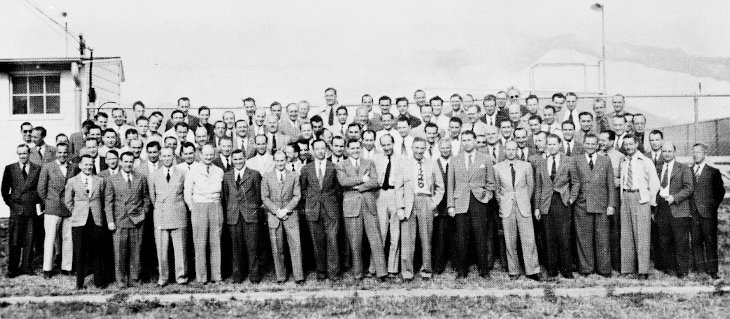
Nazi scientists were brought
to work for U.S. through
Operation Paperclip
In 1945, the Joint Intelligence Objectives Agency, a subcommittee established by the Joint Intelligence Committee of the Joint Chiefs of Staff, was tasked with retrieving German scientists, doctors and engineers who were identified as intellectually vital to the Third Reich.
“Fall of 1944, right after the Normandy landings, scattered among the Allies’ troops are these little units of scientific intelligence officers and they’re working to find out Hitler’s biological weapons, his chemical weapons and his atomic weapons,” said Jacobsen, author of “Operation Paperclip: The Secret Intelligence Program to Bring Nazi Scientists to America.”
These intelligence officers eventually discovered while the atomic weapons program was not as advanced as initially feared, Hitler’s biochemical weapons were. The hunt “for this scientific treasure and ultimately for the scientists themselves” thus ignited Operation Overcast, renamed Paperclip for the paperclips attached to the files of the most “troublesome cases,” Jacobsen writes in her book.
The U.S. was not alone in this endeavor.
Britain, France and especially the Soviet Union sought to enlist these German scientific experts, as well. A U.S.-Soviet technological rivalry marked by the Space Race and Cold War would also serve as a motivation, and justification, for Operation Paperclip’s existence.

Tens of thousands of Nazi storm troopers take the oath of allegiance to Chancellor Adolf Hitler, in the Lustgarten, Berlin, Feb. 26, 1934. Nazi banners are dipped during the swearing of the oath.
The Nazis and their contributions
By the fall of 1945, German scientists starting arriving on U.S. soil. Not all the men recruited were Nazis or SS officers but the most prominent and valued among them were, having worked either directly with Hitler or leading members of the Nazi Party, such as Heinrich Himmler and Herman Göring.
Wernher von Braun, a rocket engineer, was instrumental in developing the first U.S. ballistic missile, the Redstone, and later the Saturn V rocket while serving as director of NASA’s Marshall Space Flight Center.
As a Nazi ideologue and member of the SS, he traveled to the Buchenwald concentration camp, where he “handpicked slaves to work for him as laborers,” said Jacobsen in a 2014
Hubertus Strughold, a physiologist and medical researcher, headed the German Air Force Institute of Aviation Medicine, known for its torturous medical experiments on inmates from the Dachau concentration camp. Strughold claimed ignorance of any such activity until after the war, yet he appeared among a list of 95 doctors at an October 1942 conference discussing their findings. In the U.S., he was chief scientist of the aerospace medical division at Brooks Air Force and has since been credited as the father of space medicine.
Walter Schreiber, a former Nazi general, also oversaw inhumane medical experiments involving bioweapons that resulted in countless of deaths. Following the war, he was captured by the Soviets but defected to the U.S. He worked for various government entities before finally settling in Texas at the Air Force School of Aviation Medicine, Jacobsen writes.
While Schreiber would later serve as a witness during the Nuremberg trials, he, von Braun, Strughold and the rest of their fellow Nazis brought to the U.S. would never be held accountable for their own atrocities.
Operation Paperclip remained secret throughout much of the Cold War.
Operation Paperclip:
The truth about bringing
Nazi Scientists to America

The top-secret program brought
1,600 Nazis to America and whitewashed their past.
Origins in World War II
“Operation Paperclip” had its origins while World War II still raged. Starting in 1943, a top secret American military program called the Alsos Mission sent American scientists into Nazi Europe along with Allied troops: their mission was to search for information about the Nazis’ biological, chemical and nuclear programs and to transport that information back to the US.
At first, Alsos officials were able to make contact with Italian and later French scientists who’d worked for the Nazis, who assured the Americans that the Nazis were far from creating advanced non-conventional weapons. Also operatives made little progress in uncovering Nazi scientists’ weapons-making secrets.
Their luck changed in late 1944, during protracted fighting in the French town of Strasbourg. While fighting still raged outside, Samuel Goudsmit, a Dutch-born scientist working for the Americans under Alsos, made his way to the home of Dr. Eugen Haagen, a senior Nazi scientist who helped plan Nazi Germany’s feared biological weapons program. Haagen had fled just hours earlier, leaving his papers inside his luxurious apartment. With American soldiers guarding them, Dr. Goudsmit and his Alsos team stayed up all night reading through Haagen’s papers by candlelight.
They made for grim reading. “Of the 100 prisoners you sent me,” Dr. Haagen had written to a colleague, “18 died in transport. Only 12 are in a condition suitable for my experiments. I therefore request that you send me another 100 prisoners, between 20 and 40 years of age, who are healthy and in physical condition comparable to soldiers. Heil Hitler…” This and other papers showed that the Nazis were indeed moving full speed ahead to build potent biological, chemical and nuclear weapons.

A group of 104 rocket scientists at Fort Bliss, Texas
The Alsos officials made copious notes, writing down the names of scientists involved in these projects. Their goal wasn’t to bring these scientists to justice for their evil experiments. They were creating a list of scientists to track down, capture and interrogate. The United States was determined to learn what it could do about the diabolical weapons they were inventing.
“One by one, across the Reich,” explains journalist Annie Jacobsen in her book Operation Paperclip: The Secret Intelligence Program to Brought Nazi Scientists to America (Back Bay Books: 2014), “Hitler’s scientists were taken into custody and interrogated.” Two core goals emerged among Allied officers uncovering the extent of the carnage and horrors in Europe created by the Nazi regime. Many sought Nazis to arrest and bring to justice. At the same time, a key US and Allied goal was also to harness Nazi scientists’ technical know-how. “The scale on which science and engineering have been harnessed to the chariot of destruction in Germany is indeed amazing,” noted W.S. Farren, a British aviation expert with the Royal Aircraft Establishment. “There is a tremendous amount to be learnt in Germany at the present time.”
On July 6, 1945, the US Joint Chiefs of Staff issued a top-secret memorandum that was so explosive it was never even shown to President Truman. Titled “Exploitation of German Specialists in Science and Technology in the United States”, it outlined a program for “procurement, utilization and control of specialists” – in other words, a plan to recruit Nazi weapons scientists and bring them to the United States. The Military Intelligence of the War Department, a unit known as G-2, was given control of the program.
The US, as well as Britain, was engaged in an arms race with the Soviet Union. The Cold War was a terrifying time of escalating arms races, and recruiting Nazi weapons experts instead of bringing them to justice was seen as a key way to gain an edge. Still, the program was seen as morally problematic, and officials were keen to shroud it in secrecy.
The program was originally called Operation Overcast. A list called “List 1” included over a hundred German rocket scientists to recruit. Before the Nazi rocket scientists were given permission to move to America, Britain requested access to the scientists to do some rockets experiments of their own with the Nazi experts. One Nazi weapons expert, Arthur Rudolph, later recalled how the Nazis and British weapons experts immeidately formed a friendly bond. One night, a group of British and Nazi rockets experts even got drunk together; Rudolph recalled them standing arm in arm, “apparently comrades now, and lustily singing Wir Fahren gegen England, or ‘We Will March Against England’” (quoted in Operation Paperclip). Far from condemning these Nazis for their actions, it seems that at an early stage, Allied scientists were willing to overlook their crimes and embrace them as colleagues and even friends.
Several of these Nazi rocket scientists who’d worked on that first British experiment were later brought to America. In time, they were joined by hundreds of other weapons experts. Their cases were marked for special consideration by a paperclip in their file. This meant that no matter what crimes they’d committed as Nazis, their cases would be expedited as they were approved for admission to America. Within months, Operation Overcast changed its name to reflect this, becoming Operation Paperclip, that allowed hundreds of ardent Nazis to escape justice and build new lives in the United States.
Arthur Rudolph
Arthur Rudolph, the operations director of the Mittlewerk labor camp and expert in Germany’s powerful V2 rocket systems, was flagged by American officials as a desirable asset to bring to America. (In photo at top of the article, Dr. Wernher von Braun, center, explains the Saturn Launch System to President John F. Kennedy in 1963 as NASA Deputy Administrator Robert Seamans looks on. [NASA])
Mittelwerk was started in 1943 as a subcamp of Buchenwald. When it was liberated in March 1944, 40,000 prisoners were in the camp. “The noise, dust, and noxious gasses…exacerbated an already catastrophic health situation for the prisoners, the United States Holocaust Museum, of the conditions during the camp’s construction and expansion. Water was in short supply. The only toilets were oil barrels cut in half with boards over them, but they were too few in number; many relieved themselves in the (underground production) tunnels. The stench became intolerable, and disease and vermin proliferated. Soon, cases of pneumonia, tuberculosis, typhoid, and dysentery took a dreadful toll, combined with total exhaustion inflicted by 12-hour days of backbreaking labour with poor sleep and minimal equipment…”

Arthur Rudolph –
a prime force in the development of
the V2 rocket for Nazi Germany.
Photograph: National Aeronautics
and Space Administration
Approximately 20,000 workers died at the camp. Yet despite the horrendous conditions for the Mittlewerk slave laborers, the factory produced high level technology and weapons. It was this expertise that the United States was willing to do anything to obtain, even ignoring the crimes of a Nazi scientist such as Rudolph.
When he was granted entry to the US under Operation Paperclip, Rudolph was described by American officials in Germany as an “ardent Nazi”. He’d personally overseen slave labour and been present when prisoners were executed. West German and American officials classified him as a war criminal. Yet these accusations were quietly erased from his official file, and Rudolph worked for NASA.
In the 1960s, Rudolph became a key engineer at the Marshall Space Flight Center in Huntsville, Alabama, managing teams of scientists working on the Saturn 5 rocket that in 1969 launched the Apollo rocket in the first manned flight to the moon.
Rudolph never made any mention of his previous job as director of Mittelwerk, where his workers were emaciated slaves in Nazi Germany, of course. Thanks to Operation Paperclip, almost nothing was known of Rudolph’s Nazi past until 1979, when the State Department’s Office of Special Investigations (OSI), charged with hunting Nazis who’d hid their past and were living in the United States, was formed.
OSI officials interviewed slave laborers from Mittelwerk and approached Rudolph with an offer: he wouldn’t be charged if he voluntarily left the United States and gave up his US citizenship. He and his wife moved back to Germany, but in 1987 a German court ruled that there was insufficient evidence to try him for war crimes. He tried for years to regain his US citizenship – helped by some former colleagues from NASA – but was unsuccessful. He died in 1996 at the age of 89.
Wernher von Braun
Arthur Rudolph worked at NASA under the leadership of another “Operation Paperclip” recruit, Warner von Braun. Identified as a key asset at the close of the war because of his work on the Nazis’ V2 rocket, Braun was transferred to Garmisch-Partenkirchen, a luxurious ski town in Bavaria, for questioning by Allied forces.

Wernher von Braun (center) in 1961
with fellow Operation Paperclip
scientists working on a Saturn rocket.
At first he and his fellow rocket scientists refused to cooperate with their Allied captors, refusing to divulge any scientific information. He knew he held a foolproof bargaining chip: in the waning days of the war, Braun and his co-workers had hidden vital documents in an abandoned salt mine. Braun was determined to trade these papers for a new life in the United States.
After his capture, Braun “posed for endless pictures with individual GIs, in which he beamed, shook hands, pointed inquiringly at medals and otherwise conducted himself as a celebrity rather than a prisoner, treat(ing) our soldiers with the affable condescension of a visiting congressman,” remembered one disgusted American Counterintelligence Corps official (quoted in Operation Paperclip).
Braun was brought to the US in 1945 and for the next fifteen years he worked for the US Army, most notably as chief of the US Army ballistic weapon program. He oversaw teams that developed the Redstone, Jupiter-C, Juno and Pershing missile systems. Under his command, an incredible 120 former Nazi scientists worked on these and other jet systems.
In 1977 Braun even received the
Presidential Medal of Freedom,
the United States’ highest civilian honor.
An affable and charismatic figure, Braun wrote popular books and articles on space flight, and became a well-known figure explaining the burgeoning space program to the American public. In the 1960s, he moved to Huntsville, Alabama, and became Director of NASA’s Marshall Space Flight Center, where the Saturn space boosters that enabled manned space flight were produced. A beloved figure, in 1977 Braun even received the Presidential Medal of Freedom, the United States’ highest civilian honor.
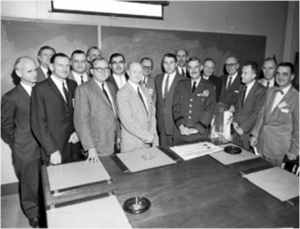
Wernher von Braun and his team in the fall of 1959 in Huntsville, Alabama. Those in the photograph have been identified as Ernst Stuhlinger, Frederick von Saurma, Fritz Mueller, Hermann Weidner, Erich W. Neubert (partially hidden), W.A. Mrazek, Karl Heimburg, Arthur Rudolph, Otto Hoberg, von Braun, Oswald Lange, General Bruce Medaris, Helmut Hoelzer, Hans Maus, E.D. Geissler, Hans Hueter, and George Constan.
Braun acknowledged he’d been a member of the Nazi party, but claimed he’d never been a true believer and had no choice. He insisted that research, not politics, was his passion.
However, there was much more to Braun than this whitewashed version of his history, and the US Army and Operation Paperclip enabled him to evade justice. Far from being an unwilling Nazi, Braun was a member of the feared SS. Instead of being unaware of the horrors of Hitler’s “Final Solution” of murder and destruction, Braun actually visited the Buchenwald concentration camp to personally select workers to become slave laborers in his V2 rocket program.
His SS officer rank and Nazi records were classified by the US Army. For years, until his death in 1977, Braun was able to evade justice. He died in Alexandria, Virginia, a beloved figure. President Carter even issued an official statement after his death: “To millions of Americans, Wernher von Braun’s name was inextricably linked to our exploration of space and to the creative application of technology. Not just the people of our nation, but all the people of the world have profited from his work….”
The many unnamed victims of his torture and forced labor remained forgotten, seemingly erased from history by Operation Paperclip.
Recruiting Agents of Torture
“It sometimes seems as if the Nazis had taken special pains in making practically every nightmare come true,” Dr. Leopold Alexander told his wife one day in 1945. Dr. Alexander was a Jewish doctor from Vienna. He’d escaped from Europe before the Holocaust, and made his way to America where worked in psychiatric hospitals in New England, specializing in shellshock and trauma. He volunteered for the US Army, and at the close of the war, he was sent to Europe to investigate allegations of gruesome medical experiments carried out by Nazi doctors.
One of the key doctors he interviewed was Dr. Hubertus Strughold, a senior Nazi official who oversaw a vast network of researchers who conducted experiments on hypothermia. Nazi scientists insisted to Dr. Alexander that they only conducted experiments on animals, but it soon became obvious that humans – particularly Jews – were the subjects of hundreds of sadistic medical experiments.

Wernher Von Braun, Arthur Rudolph, Hubertus Strughold
Unbeknownst to Dr. Alexander, Strughold was a long-time personal friend of a senior American military official, Lt. Col. Harry Armstrong, chief surgeon of the Eighth Air Force. While Dr. Alexander was stationed in Europe investigating war crimes and crimes against humanity, Lt. Col. Armstrong had a very different remit: to find Nazi medical researchers and bring them to the United States.
“During the war, physicians with the U.S. Army Air Forces heard rumors about cutting-edge research being developed by the (Third) Reich’s aviation doctors,” explains journalist Annie Jacobsen. These experiments were never published in mainstream medical journals, but were disseminated in Nazi magazines such as Luftfahrtmedizin (“Aviation Medicine”). Secretly, both British and US Air Forces would often translate the works and disseminate them to Allied doctors to study. With World War II coming to a close, Lt. Col. Armstrong and other US military officials wanted to get to Dr. Strughold and other Nazi scientists and bring them to America.
Lt. Col. Armstrong made Dr. Strughold a top-secret offer: no charges would be brought against him if he became co-chairman, along with Armstrong, of a new research center the American Air Force was setting up in Heidelberg called the Army Air Forces Aero Medical Center. Dr. Strughold was allowed to select the physicians he wanted to work with, and he chose 58 Nazi physicians, including some who’d worked with him on gruesome and cruel human experiments. Within a few years, many of these physicians were brought to the United States under Operation Paperclip.
In the case of Dr. Strughold, there was some difficulty in smoothing his way. The FBI had investigated him in Germany and found that he seems to have been an ardent Nazi. He’d “expressed the opinion that the Nazi party had done a great deal for Germany” and claimed that “prior to Nazism, the Jews had crowded the medical schools and it had been nearly impossible for others to enrol.” Military officials asked another German doctor, who himself had been accused of war crimes, to vouch that Dr. Strughold had high “ethical principles”. With this bogus endorsement in hand, Strughold set sail for the United States.
Strughold became Professor of Space Medicine at the U.S. Air Force School of Aerospace Medicine. In 1950, he co-founded the Space Medicine Branch of the Aerospace Medical Association. In 1963, it established the “Hubertus Strughold Award”, given each year to recognize excellence in space medicine. (In 2006 the Space Medicine Association Executive Committee debated removing Strughold’s name from the award. His Nazi past had been so thoroughly hidden, in part by the U.S. Army, that no evidence of crimes was found, and the award continued to bear Strughold’s name. After a 2012 article about Dr. Strughold’s Nazi atrocities, the award was finally suspended.)
In total, about 1,600 Nazi scientists
were brought to the US under
Operation Paperclip, as well as their families.
In total, about 1,600 Nazi scientists were brought to the US under Operation Paperclip, as well as their families. They evaded justice and in many cases were able to erase all mention of their Nazi pasts in their official biographies. For most of these scientists, justice never caught up and many died in America, seemingly innocent workers whose neighbours and friends and co-workers never knew the gruesome secrets in their pasts.
It was only in 2006 the Office of Special Investigations (OSI) finally succeeded in publishing an official record documenting Operation Paperclip, after objections from the Justice Department. The OSI was disbanded in 2010, but its research and the mirror it held up to America continues to shed light on Operation Paperclip and this shameful chapter in American history.
For years, Nazis “were indeed knowingly granted entry” to the United States the OSI concluded. “America, which prided itself on being a safe haven for the persecuted, became – in some small measure – a safe haven for persecutors as well.”
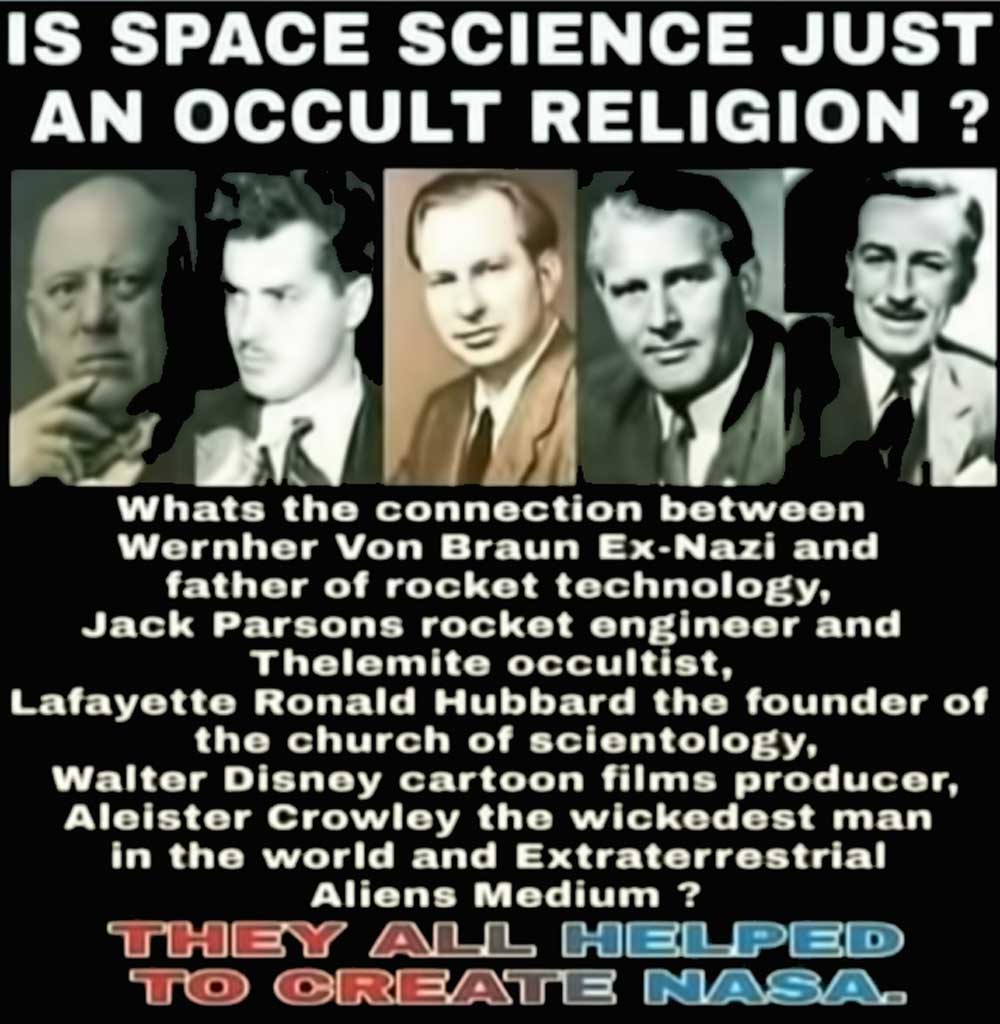



click image for video
Some more soothing music
which pretty much sums things up
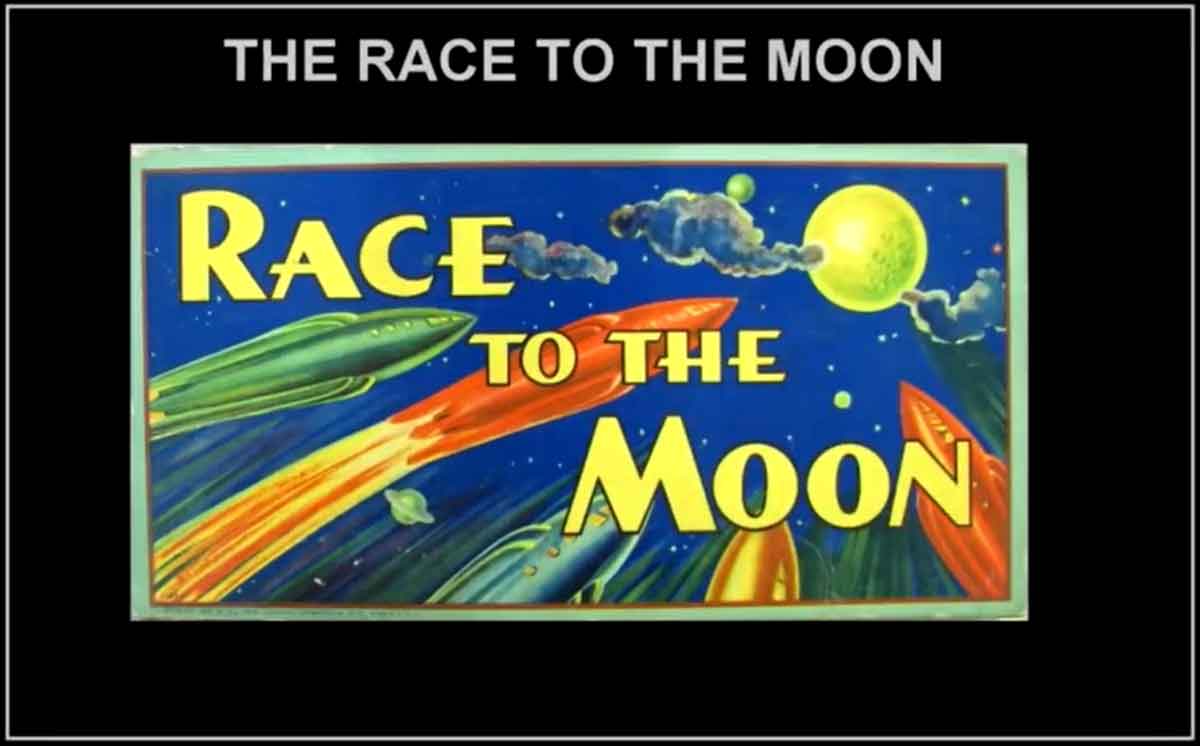
click image for video
AMERICAN MOON
Massimo Mazzucco
proves Apollo mission
was impossible
Mazzucco exposes the Apollo Moon Landing as a Hollywood stunt.
This is by far the most complete and professional analysis that digs down deep to debunk the debunkers.
Video by Deathbed whistleblower: The son of a guard at film site states that LBJ attended Cannon AFB in New Mexico, to kick-off of the hoaxed moon landing filming event!

click image for video
Moon Rover
Puppet Show

click image for video
A FUNNY THING HAPPENED
ON THE WAY TO THE MOON
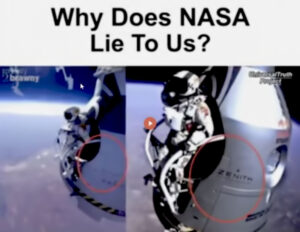

click image for video
MARS?

click image for video
NASA
we lied about
EVERYTHING

click image for video
CHALLENGER EXPLOSION
AND MOON LANDING
ALL A HOAX TO FOOL THE PUBLIC
CREW STILL ALIVE
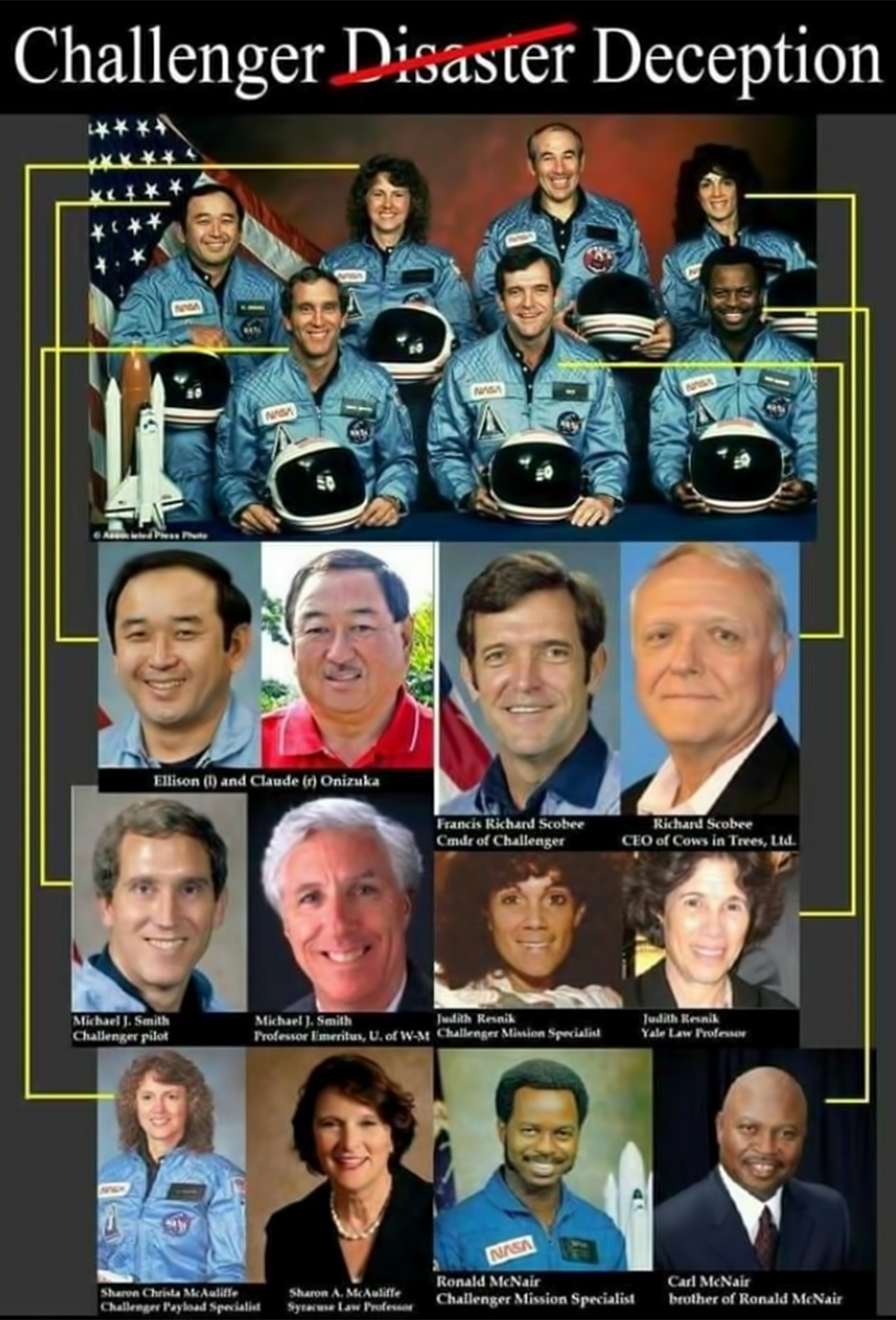

Click image for video
Challenger Explosion
28-Jan-1986,
FAKE!
Trauma Based Mind control
‘Astronauts’
still alive
(2025)
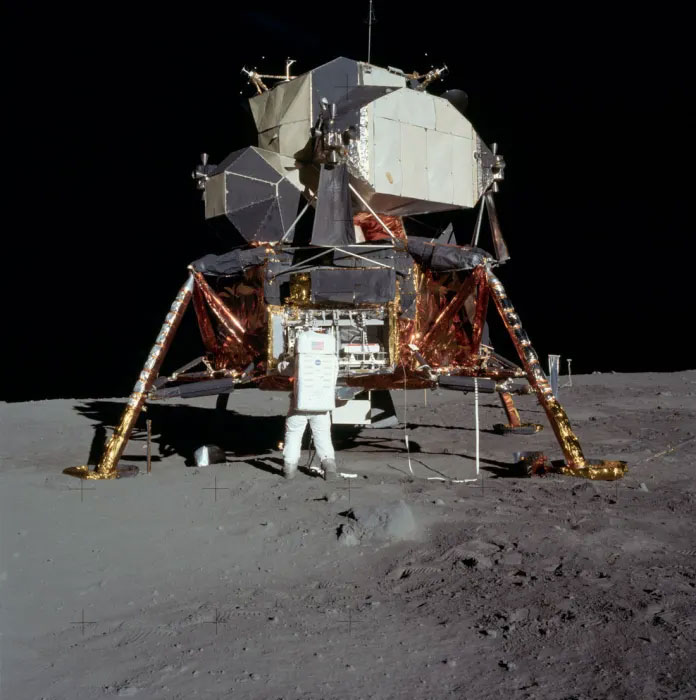
Do you Still Believe in NASA Claus?
Do you Still Believe in
NASA Claus?
Submitted on May 20, 2022
The pocket calculator didn’t hit the market until 1972. A USB-C charger today has more computing power than the best of NASA’s computers in the 1960’s. Your smartphone is literally millions of times more powerful than the Apollo 11 guidance computers.
But never mind all that.
In the magical 1960’s, despite lagging way behind the Soviet space program, NASA sent a whole slew of these comically low-tech space mobiles on a 238,000 mile fully-manned mission to the Moon (and then back!) despite having less than 1% of the required fuel necessary to make that ludicrously long of a flight, all the while traversing the extraordinarily dangerous vacuum of space, what with the radiation, meteorites, and insane temperatures that would boil you alive or flash freeze you in an instant– where you not magically protected by the gear of the NASA space suits, the fabrication of which NASA farmed out to a bra manufacturer (Platex). You read that correctly. Bra-companies were super high tech in the 60’s. Even though the pocket calculator hadn’t been released yet. That was still several years away.
Yep, it was good to be in the magical 60’s, back when you could MacGyver your way to the Moon and back, in a ship that Ed Wood would have laughed at, all while a highly controversial and unpopular Vietnam War was raging, which dang it, if that war didn’t need some sort of timely feel-good story to distract from all the senseless bloodshed in South East Asia. Too bad there wasn’t one.
Oh, hey, wait! That’s right. We went to the Moon. A buncha times. With stunningly perfect execution. In the below displayed patchwork mix-and-match tinfoil and VHF antenna space mobiles. With the computing power of less than a pocket calculator on board. And that’s not an exaggeration. They went over half a million miles through the incomparable complexity of space in a craft with the navigational computing power of less than a frickin’ pocket calculator.
And they did it all while joking around, cool-as-hell-astronaut-style, in an unbelievably tiny lunar module that looks like it was made from the scraps of a failed art class project. Y’know, the Apollo 17 went almost 1.5 million miles, so they say. On one tank of gas. We need that magical 60’s technology back now! Especially that fuel mileage. FJB.
Also, one other thing. NASA lost all of the original footage from the Moon trips. You read that right. Good old NASA “misplaced” all 700 cartons of the original recordings and have no idea what became of them, so now there is nothing whatsoever to observe regarding that very special time in the 1960’s, when impossibly historic things could be done, and then all of the actual footage mysteriously disappear forever afterwards.
And so then also they never went back. No one ever went back. From anywhere. In fact, since those heady days of yesteryear no space program from any country has gone more than 400 miles into the Earth’s outer atmosphere. Today’s space programs must really suck compared to those 60’s astro-studs. Those guys could do anything. They could probably fly a Pinto to the Moon.
But really, why bother going back, anyway? When you’ve travelled almost 1.5 million miles in one go around way back in the day, when your computing power was just slightly above the abacus, what would be the point of continuing beyond today’s 400 miles, now that you have billions more times the computing power?
Supposedly (and officially) NASA got these trashy Ed Wood-ian space go-carts there and back with men on board 50 plus years ago, and then never got within 238,500 miles of their previous best, despite the entire world competing for space dominance. The Russians, one would imagine, just gave up when they saw the USA got a craft that looked like was pastiched out of cardboard, tinfoil, some horns, and an antenna, on a round trip jaunt to Mr. Moon, all without breaking a sweat. Except that one time in that Tom Hanks movie. But even that worked out in the end. Space was easy as crap in the 60’s.
Also, I gotta mention that the Moon Show wasn’t direct-broadcast live. The NASA equipment was incompatible with TV technology, so the Networks simply filmed a small black-and-white TV with the taped footage on it and broadcast that to the People. Nice! This is starting to seem more and more believable.
How long will NASA (or any other space program) have to NOT send men or women back to the Moon before it starts to get a teensy bit suspicious that they did it all so casually way back when on just 1960’s low-tech hutzpah? Does 100 years have to go by before it all looks a tad bit hinky?
I love USA history as much as anyone, but it’s looking like the NASA Moon story really is the adult equivalent of Santa Claus or the Easter Bunny, as Dave McGowan states.
Maybe they did go to the Moon, if it is even a place that can be ‘gotten to’ – but if they did so, it wasn’t with the technology they displayed. The very notion that they did it as they proclaimed is beyond ludicrous. Think of the fuel requirements, the oxygen needed, the vast array of equipment, from sanitation to navigation, to heating and cooling systems, to God knows what else you need to navigate a million plus mile journey, in some cases, through absurdly inhospitable radiated space terrain, which they accomplished in this tiny, flimsy hunk of space origami smaller than a Winnebago. All according to their own models, of course, not necessarily the actual reality of what’s out there in space itself.
Where the hell did they even put everything? And how the hell were they so chilled out when they were 238,000 miles from Earth, on a desolate surface that could shift 500 degrees in an instant, as they bounced around near their Ed-Wood-mobile, with micro-meteorites that could rip through their bodies at any moment, knowing also that they had to rocket this crazy looking piece of shit back off the Moon and out of its orbit (which is powerful enough to create our tides some quarter million miles away) and then dock it with a Command Module traveling around the Moon at a mere 4,000 mph. But yeah, they did that perfectly every time. On basically untested equipment, since how could you really test it until you did so in real time space conditions? With, once again, less computing power than a pocket calculator.
Can you smell the bullshit yet? Do you still believe in NASA Claus?
So, then, yeah, they did all that like they said they did and then they lost all the footage and never did it again. Cool!
And also, they never took any photos of the stars, though those stars would have been more brilliant than anything even remotely resembling what we see here on Earth. Nah, why bother? It’s just the incredible starry firmament. Who wants to see that? Let’s see some more pics of the junk mobile and the Moon’s desolate parking lot. Maybe hit a golf ball or something. Drive around in a Moon buggy.
Cut! Let’s go home now. And, yeah, once again, definitely never go back, even with infinitely more advanced technology. Been there, done that. Got the Moon T-shirt.
I know, I know. The (patently ridiculous) NASA Moon Story is a tough one to let go of. How could they lie about such a big event and then hold onto that lie for so long? How many people needed to be in on it?
How many needed to be in on 9-11? That’s another impossible-by-the-laws-of-physics situation, with an absurd cover story that most people still believe in today.
Did they go to the Moon with different technology, like a Stargate set-up, or a completely different kind of spaceship? Maybe.
The Father of the Apollo Space Program said that it would take a minimum of 3 ships the size of the Empire State Building each to make the round trip, with each ship weighing over 800,000 tons, for fuel reasons, but also for all the equipment necessary.
But yeah, no– 60’s NASA did it in a tiny paste-and-tape job and then called it a day.
Who knows what the real story is? Maybe the Moon isn’t even a celestial body that you could land on, in the manner that they showed us all on the TV set. I don’t profess to have the complete story, not by any stretch, but one thing is for sure, NASA was bullshitting the hell out of the world in the 1960’s- and the world’s first TV generation was mostly believing it. However, 1/3 of all people polled back then did not actually believe it. And today, about 1/4 of all younger generation people do not believe the story, either.
NASA, or some other space program, can dispel all of these myths, perhaps, by sending some Astronauts back to the Moon. But they could just as easily fake the whole thing with CGI. Which is kind of the beauty of the 1960’s gambit. They had to put this story over on the (now absurd) low tech capabilities of the day.
Remember, one last time, the pocket calculator had yet to be available in the marketplace! And they had no actual idea about the harshness or the difficulty of that stupendous half million mile journey through space, with all the insane and incredible calculations required to make it happen without anything going wrong or breaking or anyone dying, and yet they nailed it every time! Money, you gotta love the 60’s!
So, yeah, don’t expect a return show anytime soon. It would be way too expensive now. Money was much more plentiful in the 60’s– even with the costly war in Vietnam going on.
Too bad there wasn’t a huge distraction from that supremely unpopular war happening to cheer people up. Oh wait, there was– we went to the Moon and back a shit load of times, easy peasy!
Then managed to lose ALL OF THE ORIGINAL FOOTAGE, forever. Oopsy.
As an indie filmmaker, losing one day’s worth of dailies would be an unimaginable horror, so just imagine losing all of them, and not just the dailies of any old movie, but the supposedly most important and historic event in the entire history of the world.
NASA, you silly goose! Fire that intern.
So, yeah. I call bullshit on the Official Moon Story. Hopefully, they come up with a better one sometime soon. But I think it’s well proven that you can get the public to believe anything with some TV newscasters and some good old fashioned written words in academia and newspapers. And, to be completely honest, with this hoax in particular, I’m glad they did it!
Because it’s so freaking funny that they put the whole thing over. The other ‘conspiracies,’ like JFK, and 9-11, and the Covid-Election-Steal One-Two Punch of 2020, are so much darker, that this one is comparatively lighthearted, in that no one gets hurt, and we all get to take a trip back to that magical time in the 1960’s where, despite all the murder and mayhem and revolution going round, you could still send a mess of guys on a half million mile round trip journey to the Moon, in a scrap heap tin-foil-wrapped go-cart, and call it a hell of a good time all around!
We should do it again sometime.
Seriously.
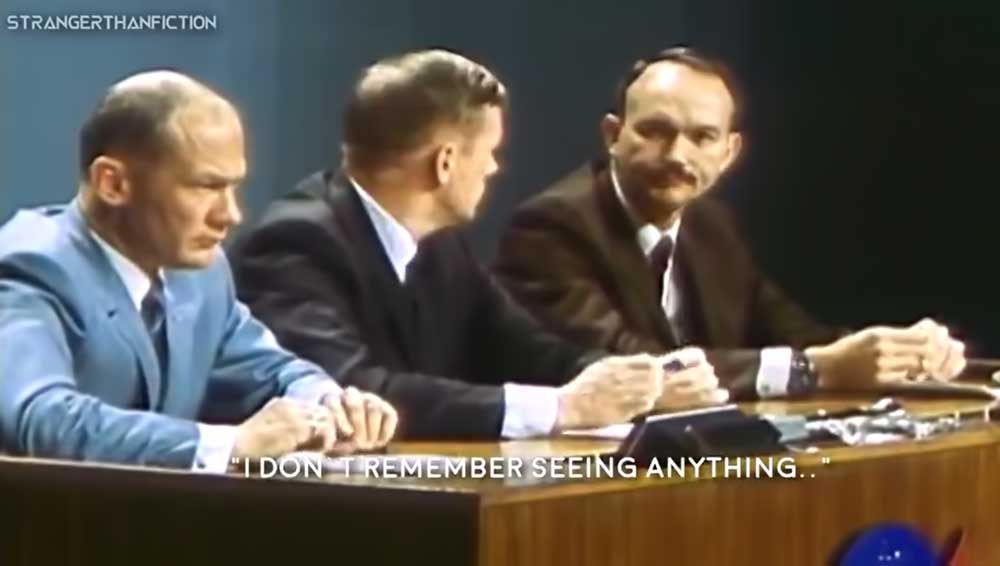
click image for video
Nasa – Never A Straight Answer
and their lies about space.
The fake moon landing made in
Stanley Kubrick’s film studio in London proves everything.
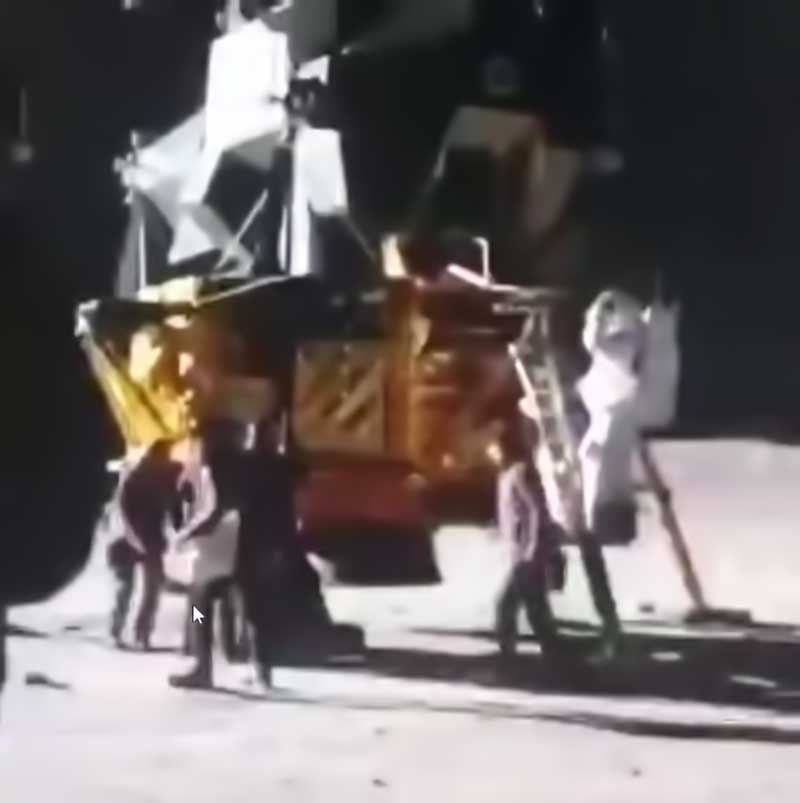
click image for video
Nasa
Another leaked video
This fake moon landing video
proves everything.

click image for video
THE INTERNATIONAL SPACE STATION
OR INTERNATIONAL FAKE STATION
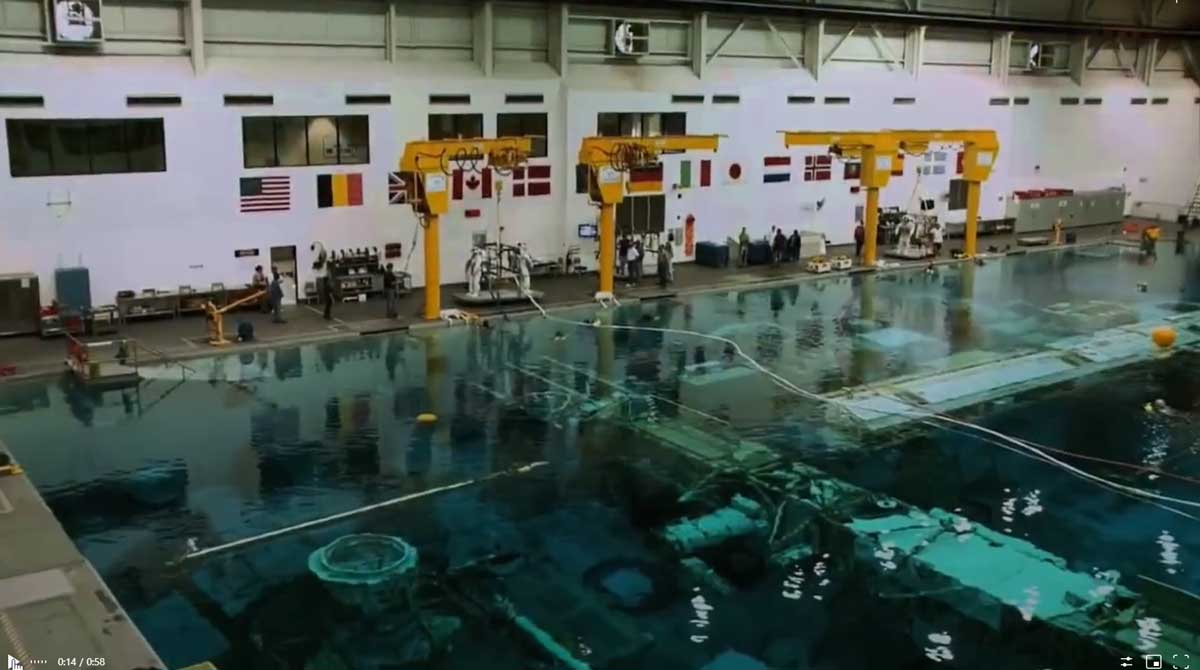
click button for video
If you need an example
of a large-scale deception
that allowed Musk
to become the
“richest man in the world”,
watch this video about
how they filmed
the “International Space Station”
inside a giant pool.

click image for video
More AstroNOTs
& Fake Space Walks!

click image for video
Copied from Web Post
Wake up!!
50 years ago… NASA had technology in Shuttle crafts to travel 230,000 miles away to the moon…
This Shuttle needed only one tank of gas and could easily (supposedly) travel through the Van Allen radiation belt with no problems//// today [they] ,[NASA] can and has ONLY travel 1/Thousandth of the distance since 50 years ago… back then [they] had technology that was only 1/millionth as strong and capable of today’s Smart phone…
Today all EVIDENCE of APOLLO 11 Shuttle craft/ blue prints and original videos have been destroyed….(nothing has been saved from this historic journey and records)… All that remains are edited videos of a moon landing that shows three different shadows from the different lighting sources in some clips…. No stars in the back ground..(later added)///
Only one photo of EARTH 🌍 was made public for 50 years…
The astronauts were WARNED not to give interviews <<<and seldom do….
By FACT.. If NASA did go to moon 50 years ago… They would would have technology and videos to this day of life traveling to MARS & beyond now… But NASA can’t even duplicate their APOLLO 11 journey , even with the most sophisticated computers and technology to this day that is 1 million times stronger than in 1969/////…
>All APOLLO 11 equipment DESTROYED
>DESTROYED all original video Tapes
>Original Blue prints
//( No one would ever do this destruction of a historical land mark and journey in U.S. /World history…>>>Unless they were destroying evidence<<)
Today you can’t get good phone service in the forest or far from the city in high terrains or canyons or the oceans….//// But evidently back in 1969 you had perfect technology to speak with astronauts 150,000 miles away????/////
))) There is footage coming out by NASA whistle blowers who have LEAKED the fake videos of APOLLO 11. Astronauts pretending to be traveling half way to the moon<<<
The Radiation Field between the Earth is moon i25,000 miles think… And to this day they don’t have the technology to travel through the radiation belt >> >>NASA Astronauts Col. Terry Virts, Dr. Kathleen Rubins, and Dr. Kelly Smith (NASA Engineer)
say in official NASA videos that no one has gone beyond low Earth orbit yet, through the Van Allen Belts of dangerous radiation.
This means no one has landed on the Moon yet. //// (Now all three NASA employees are banned from talking to the public)….
+Think>> how can a small Space Shuttle LEAVE the Earth. Which is spinning 1000 miles on it’s axis and flying the through the universe at 4× times the speed of a bullet>>>> how does a NASA shuttle leave Earth to travel a half million miles round trip on a tank of gas>> make through 25,000 miles of radiation belt, have perfect radio communication in 1969 when NASA only had less than 1/millionth of computing power of today’s Smart phone….
Why was all EVIDENCE of APOLLO 11 destroyed????



Recipe for the day
Tale the word ‘ILLUMINATI’
Turn it around ‘ITANIMULLI’
Get the new word, put a .com after it to turn it into a link
itanimulli.com
click on it and see where it leads you
Have fun

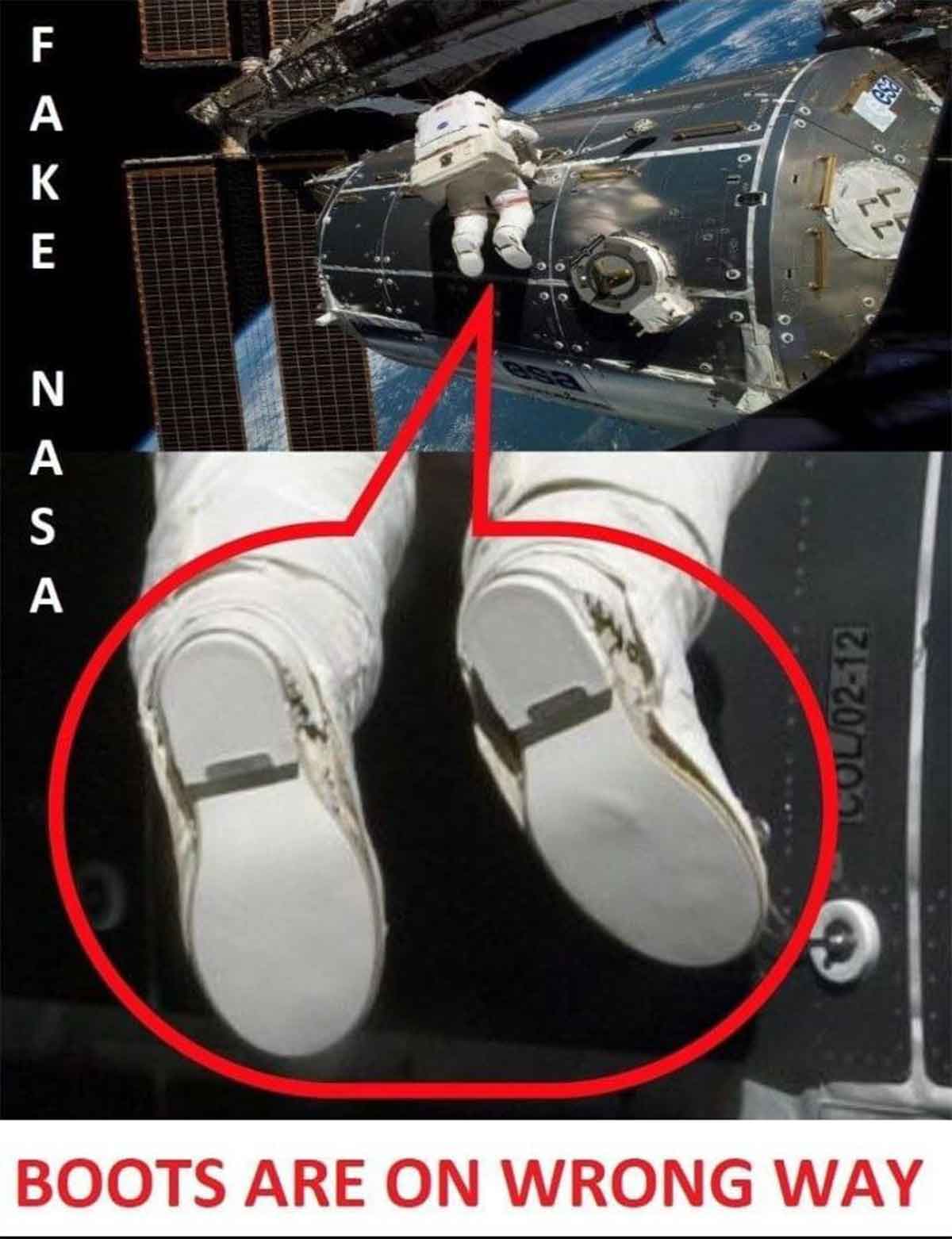



Some more soothing music
which pretty much sums things up
No photographs of Earth

Former head of Roscosmos says
NASA did not land on the Moon.
Dmitry Rogozin ex-director general of Russia’s main space corporation explained, he asked his leadership team to look into whether NASA had actually landed a dozen astronauts on the Moon in the late 1960s and early 1970s.
After all, Rogozin reasoned, “It was not clear to me how the United States, at that level of technological development of the ’60s of the last century, did what they still cannot do now?”
This comes after NASA admitted they can’t go to the moon again because of Technology that was lost after the 1960s ( what kind of technology could have been lost, while one of todays Smart Phone is more advanced than all NASA computers combined together of the 1960s) .
Dmitry Rogozin investigation team
found not one evidence
NASA landed on the moon.
Russia had the technology to see where the moon landing was and knew the specific landing site, but in real time of the moon landing their was no photographs or documentation of the site and a half century later their is still no evidence or photographs of any trace landings of NASA on the moon.
Dmitry claims a coverup with Russian space agency and NASA took place and Russia did not want to EXPOSE NASA as fraud because they had good relations and Russia was scared to break international ties with NASA – besides, the world would not have believed Russia anyway and put any dissention information down disinformation and to jealousy.
With only one photo of the Earth taken by NASA in 30 years ( now there are a few photographs the past 25 years but still the photos are time lapsed photos and spliced together in sections, with the same excuse because of clouds) since the moon landings, its reported the one photo in existence was stripped together in pieces due to clouds.
Today thousands of professional photographers and editors use Editing tools and can change the exposure of photos on computers and can clearly see the photos of the moon, the Earth from the 1960s as cut and PASTED ..
Even photos from the 90s of Earth are clearly computer cut and pasted. In today’s fast moving world of the internet and leaks…
Hundreds of videos emerge of NASA Astronauts who are caught using green screen.
Floating with hidden wire harness, dropping objects in a supposed zero gravity environment of space and so many other videos of Flies, mouses and air-bubbles in NASA videos in space.
Is it coincidence that Prescott Bush ( Bush family) funded Hitler (this is in U.S. Archives and Google also has the data) and Operations Paperclip brought the NAZIS over to the U.S.
And created NASA
And was it coincidence that Prescott Bush was inside YALE’S SKULL AND BONES secret society that help create the CIA and years later George H.W. Bush would be the director of the CIA and was also part of SKULL AND BONES (that was once considered conspiracy but now proven a true secret society)…..
Is it all coincidence how NASA
was created with NAZI’S?
How did Apollo 11 travel 500,000 (half a million miles) miles to the moon and back with one tank of fuel?
And travel through 25,000 miles of the radiation belt and the radiation did not effect the electrical system?
Why did NASA never go back to the moon?
Then claim they lost the technology to travel back to the moon along with all the records ?
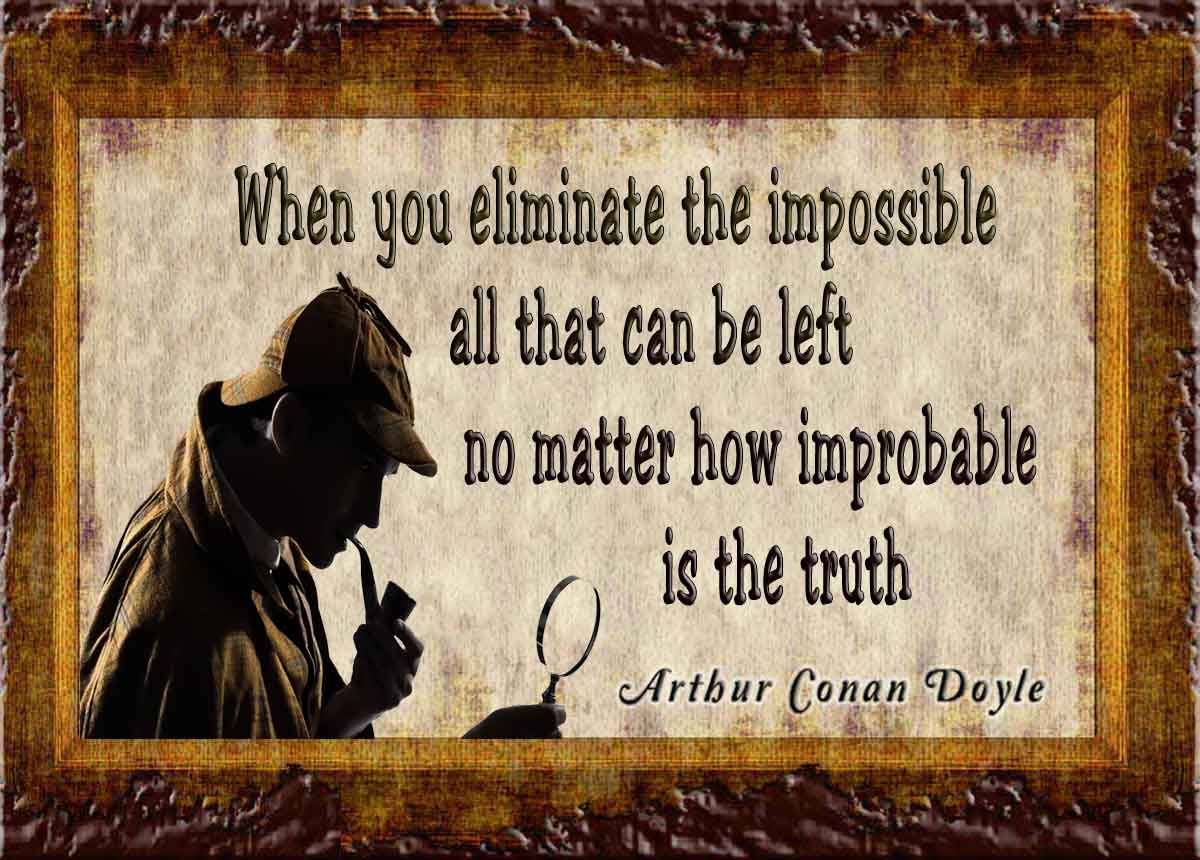




-0-0-0-0-
This website is always
'work in progress'.
None of the content of this website is original
it is posted here for interest only and should
be considered untruthful and inaccurate until
you've done your own research.
We are not responsible for the accuracy
of any item on this website -
if you choose to accept it and act on it
without doing your own research,
that's down to you.
All content is sourced from that
readily available on the public domain
and does not reflect the views or
opinions of the website creator and should
be viewed critically and considered satire.
While we try to ensure the accuracy of items
mistakes/misinformation/disinformation will
occasionally occur and we invite your corrections.
-0-0-0-0-
Please report broken links
Use the contact form below for messages or
for files or messages by email direct to
email: redpilledtruthers@gmail.com
-0-0-0-0-



